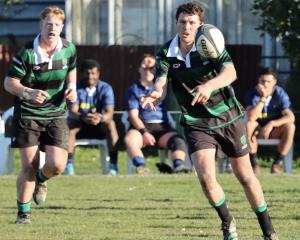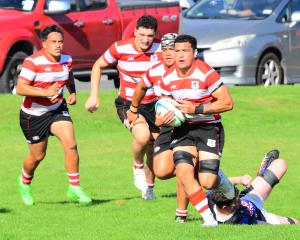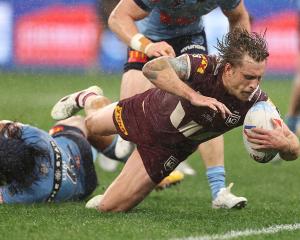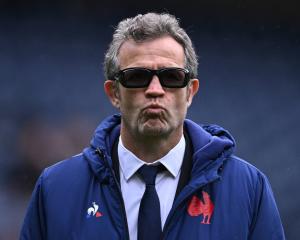
There is a story told by long-serving Otago rugby manager and union president Des Smith that sums up rather well the magnetic pull of Tuppy Diack.
The two elder statesmen of Otago rugby had been on a road trip to Queenstown and stayed for the aftermatch at a White Horse Cup game, so the hour was late when they headed home via the Pigroot.
When they reached Omakau, Smith phoned the Dunback pub to be told, sorry, there was no chance of a quick drink and a bit of tucker if they called in at 11pm.
"I’ve got Tuppy Diack, the former All Black with me."
To which the publican replied: "Tuppy Diack. I’ve never met him and would love to have a beer with him."
That is how two stalwarts found themselves having a feed of fish and chips and a yarn with yet another person who thrilled to the prospect of an audience with one of the great figures of Otago rugby.
It illustrates how Diack, the first player to earn 100 caps for Otago and a one-test All Black, was something of a Pied Piper figure — in the most positive manner possible — in the rugby community. People sought him out for a chat, either to tap into his immense rugby knowledge or simply to soak up the mana of a man who gave back much more than he took from the sport.
He was a wonderful player but he was also a coach, a mentor, a sounding board, an administrator and a near-constant presence on the sidelines of Otago University, Otago and Highlanders rugby.
"Tup was a wonderful man and a true friend," Smith recalled.
"He was an amazing rugby player but he was far, far more than that. He was kind, modest — a real gentleman.
"He was so well respected wherever he went and gave his time to everyone he came in contact with."
Smith recalls watching Diack "weave his magic on the wing" at Carisbrook before getting a taste of Diack’s generosity.
After scoring a couple of tries for Kaikorai and converting them himself, Smith was selected in an Otago second grade team and unexpectedly advised he would be handling the goal-kicking duties.
He called "Mr Diack", who was teaching at John McGlashan College, and the former All Black promptly gave Smith an hour-long session on the intricacies of kicking rugby goals.
Smith later served as Otago and Highlanders manager for eight years and recalls Diack barely missing a training session as an interested observer.
"The players loved him being there, and he became part of our teams. His understanding of the technical side of back play was incredible."
Diack served as Otago Rugby Football Union president in 2005, and he and Smith spent many an enjoyable Saturday heading around the region.
"The people in the country just loved to see Tuppy. He was like a magnet in the clubrooms after the game.
"Many of those people used to stand on the terrace or sit in the stand at Carisbrook and watch him playing for Otago."
Diack, who died in Dunedin on May 16, aged 94, played six games for Southland in 1954 but was otherwise exclusively seen in Otago blue in provincial rugby.
He played 101 games for Otago between 1951 and 1964 as a goal-kicking, strong-running winger who was described by late ODT sports editor Brent Edwards as the "pin-up boy" of the province.
There were highlights aplenty, including a Ranfurly Shield victory over Wellington in 1957, helping Otago tame the Lions in 1959, three consecutive selections for the South Island, and 18 appearances for New Zealand Universities, including a famous victory over the 1956 Springboks.
In 1959, Diack scored two tries and kicked two conversions and a penalty for the Universities side against the Lions, and when he kicked four penalties and a conversion in Otago’s 26-8 win over the Lions, he finally heard his name read out in the All Blacks over the radio.
Fate played a cruel hand when he was ruled out of the first test at his beloved Carisbrook with an ankle injury sustained in Otago’s game against the tourists.
"I was usually able to run off an injury but this one got worse," Diack recalled years later.
"The pain was excruciating. It was the only major injury of my career, and it was a bit of a sad end to what had been a wonderful week."
Diack got an All Black jersey and a framed photograph for being selected, but had to watch from the Carisbrook grandstand as the All Blacks beat the Lions 18-17 thanks to the boot of Don Clarke.
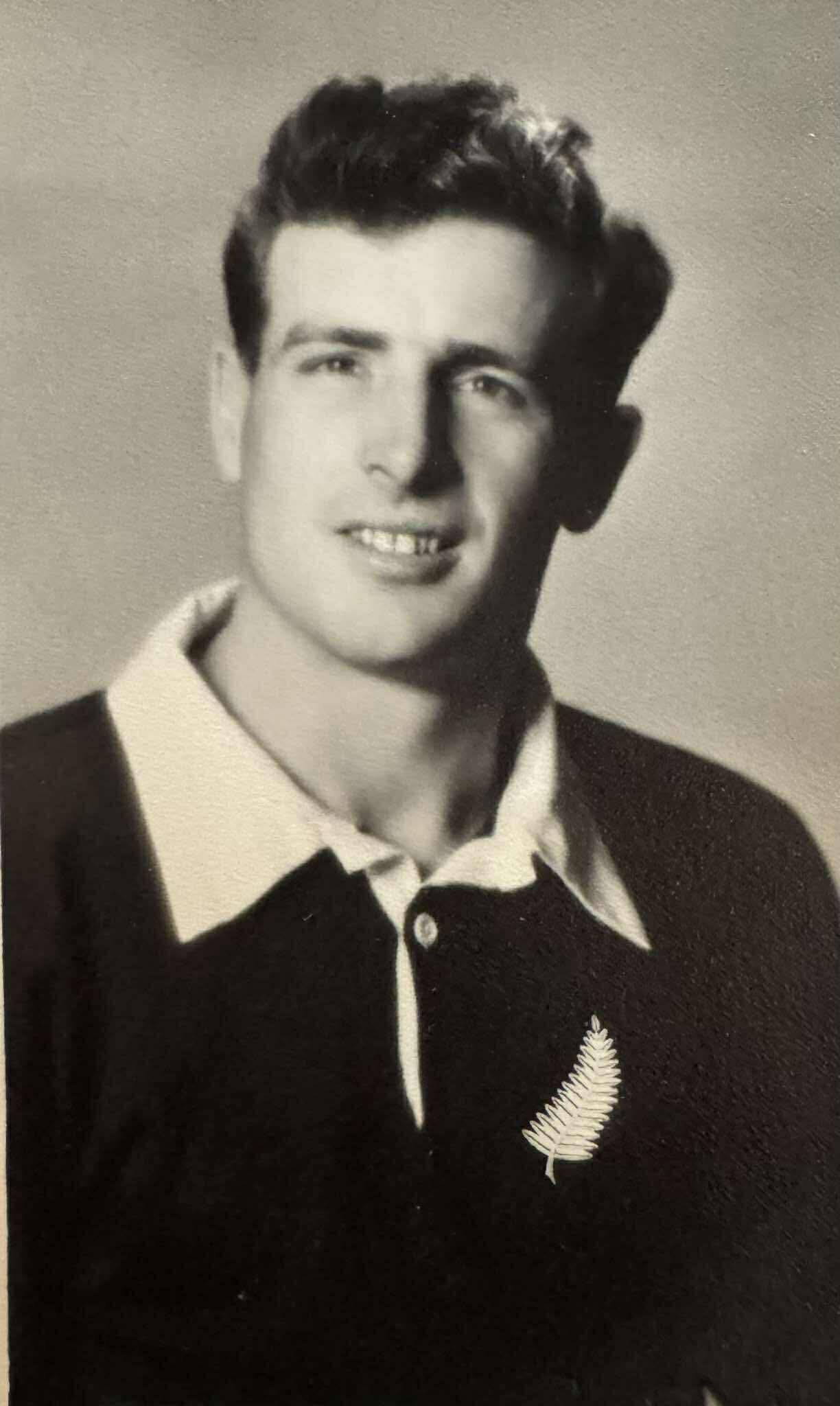
Diack drew the short straw to play on the right, Caulton scored two tries in an 11-8 win, and the Otago man did not play in the third and fourth tests as the ankle was still not right.
He trained like a man possessed over the summer and regained his top-line pace, and it was a blow when he missed selection for the All Blacks’ 1960 tour of South Africa.
"I was really disappointed to miss out. I thought I could have made a difference on that tour."
Diack, All Black No 602, bowed out of top rugby aged 34 in 1964, having scored 53 tries and 706 points in 146 first-class games.
Ernest Sinclair Diack was born in Invercargill on July 22, 1930. He was the eldest of four children to teachers Ernest (known as Charlie) and Molly Diack.
The nickname emerged at the age of 10 months. Ernest junior had no pet name to distinguish himself from his father and grandfather (also Ernest). His father came home one day, looked in the baby’s crib and said, "Poor little Tuppence hasn’t got a name." And Tup, or Tuppy, stuck.
When he was a toddler, his father — who played rugby for Southland, New Zealand Universities and Marlborough, and coached Southland to Ranfurly Shield success — was seconded to Havelock then Wellington then Koromiko, where he started school.
At 7, the family shifted back to Invercargill for his father to teach at North School. Two years later, the family shifted to Napier, where Diack started at Napier Boys’ High School, playing for the First XI cricket team as a third former.
When Diack was 15, the family moved to Pukerau, near Gore, where Ernest sen was headmaster at Pukerau School. There were not enough bedrooms in the house, so Diack’s bedroom was a tent with a wooden floor and wooden sides in the back yard.
He finished his schooling at Gore High School, where he was head prefect, captain of the cricket team, vice-captain of the rugby team, athletics champion and regimental sergeant-major of the cadets.
Diack stayed at Knox College to begin a teaching degree in Dunedin, but returned to Pukerau every holidays to work as a hay contractor and farmer’s hand. The story goes that, while tossing bales of hay on to a trailer, he counted each one because he was paid a halfpenny for two bales. His total when he finished was over a million bales — a record which Southlanders say stands to this day.
After graduating in 1954, he started a masters in history so he could continue playing rugby for his beloved Otago University club. He later played for Zingari-Richmond, and played his last game at the age of 39.
While the legacy of his rugby career included four hip replacement operations and two knee replacements, the sport remained a great love.
Diack was a New Zealand Universities selector for 13 years and coached an NZU team to Japan, he coached the Otago University Gold colts into his late 70s, and he continued to mentor student goal kickers at a club where he was more than just a life member — he was an institution.
"I’ve always been involved with the University club, and working with 18 to 20-year-olds keeps you on your toes. You get all the bad publicity about students but I don’t buy it."
Diack was nearing the end of his school days when he met Margaret Potter, a farmer’s daughter from Pukerau, whom he married in Gore on December 11, 1954.
They bought their first home in Dunedin that same year, and both initially taught at primary schools, Diack at Caversham and his wife at Kaikorai, before sons Kim (1963) and Shane (1965) and daughter Philippa (1968) were born. The family settled in Forbury Rd, which was to remain their home for over 50 years.
A passion project was Margaret’s garden full of fuschias — some 150 different varieties, regularly shown off to gardening groups and passers-by — while many happy holidays and summers were spent at a crib in Otematata.
His daughter said Diack found a perfect partner in Margaret.
"They absolutely loved one another. Everybody tells me they were just such a team," Philippa said.
"They had intellectual conversations. Dad read the paper, cover to cover, and they’d have good conversations about politics and about sport. Mum loved her rugby too. She understood the game.
"He was a great dad. He was always keen to see us get ahead and do well, and he encouraged us academically and, particularly, with sport."
Diack taught at John McGlashan from 1961 to 1988. He taught geography, social studies and physical education, spent 13 years as deputy principal, and coached both the cricket and rugby teams.
Deerstalking and shooting — both black powder and smallbore — were interests outside rugby, and he also became a keen golfer.
"You always hear about top sportspeople and their top two inches, and Dad was like that," his daughter said.
"He had that mentality. He gave it everything he had."
The Diacks had been happily married for 68 years when Margaret died in 2023.
Tuppy Diack is survived by children Kim, Shane and Philippa, and grandchildren Libby, Morgan, Madison, Ruby and Charlotte. — Hayden Meikle




